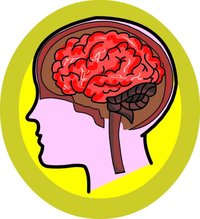Parietal lobe
|
|
| Contents |
Anatomy
The central sulcus separates the parietal lobe from the frontal lobe, and the parieto-occipital sulcus separates the parietal and occipital lobe.
The parietal lobe can be subdivided into the superior parietal lobule and the inferior parietal lobule with the two separated by the intraparietal sulcus.
The precuneus, the postcentral gyrus, the supramaginal gyrus and the angular gyrus are part of the parietal lobe.
Cytoarchitectonic the parietal lobe can be divided into regions referred to as Brodmann areas 1, 2, 3, 5, 7, 39 and 40.
Function
The parietal lobe plays important roles in integrating sensory information from various senses, and in the manipulation of objects. Portions of the parietal lobe are involved with visuospatial processing. Much less is known about this lobe than the other three in the cerebrum.
Pathology
Gerstmann's syndrome is associated with lesion to the dominate (usually left) parietal lobe. Balint's syndrome is associated with bilateral lesions.
Anatomy Clipart and Pictures
- Clip Art (https://classroomclipart.com)
- Anatomy Illustrations (https://classroomclipart.com/clipart/Illustrations/Anatomy.htm)
- Anatomy Clipart (https://classroomclipart.com/clipart/Anatomy.htm)
- Anatomy Animations (http://classroomclipart.com/cgi-bin/kids/imageFolio.cgi?direct=Animations/Anatomy)



